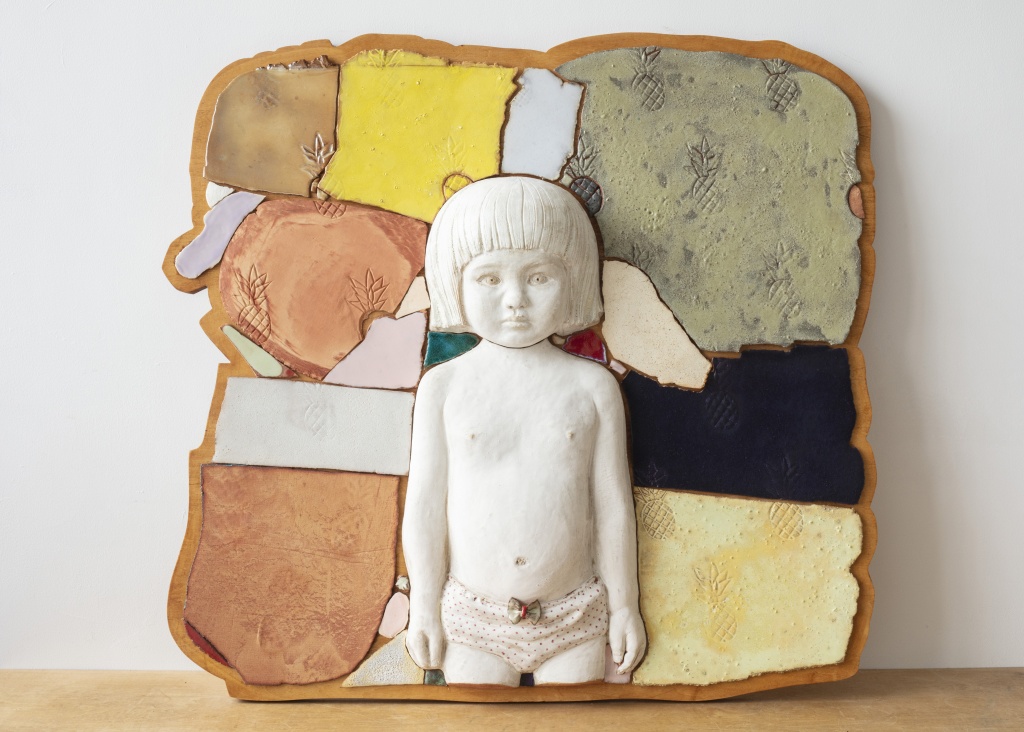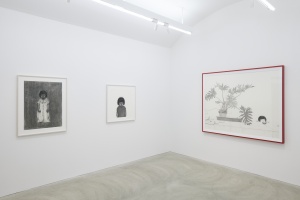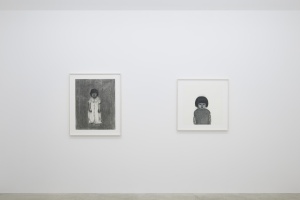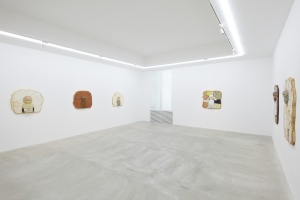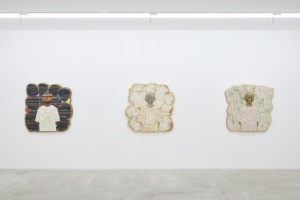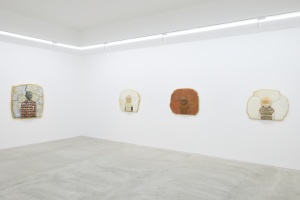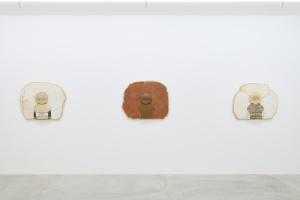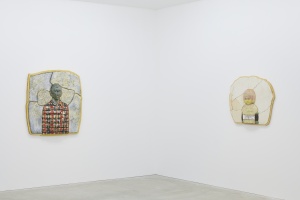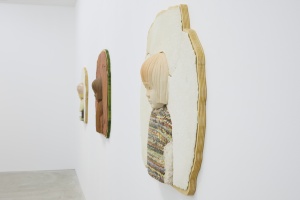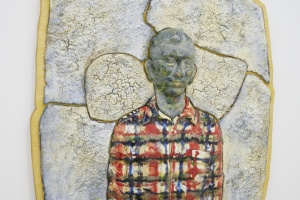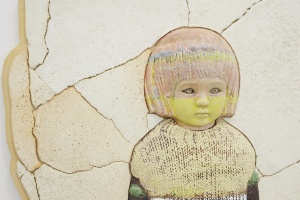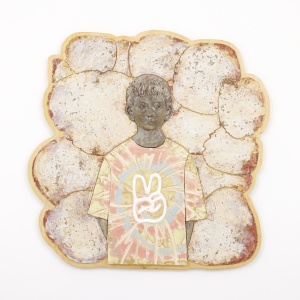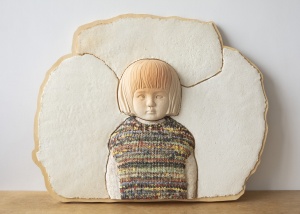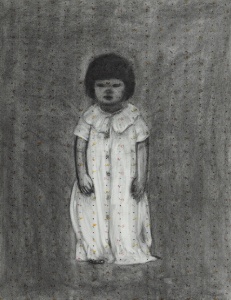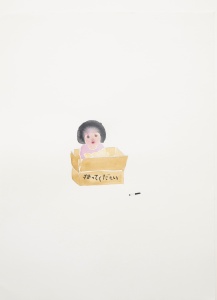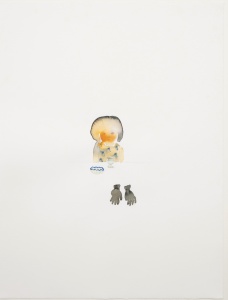Tomio Koyama Gallery is pleased to present “Portraits,” an exhibition of works by Masako Ando. The much anticipated exhibition marks the artist’s fourth solo presentation with the gallery since her previous showing five years ago, and features ceramic relief works that have developed a new frontier within her practice, along with a selection of charcoal, pencil, and water color drawings that will be shown for the first time.
【Online Viewing】
Matterport by wonderstock_photo
【About Masako Ando and her works before 2016】
Masako Ando was born in the Aichi Prefecture in 1976. She graduated from the Graduate School of Fine Arts, Aichi University of the Arts in 2001. She currently lives and works in Seto city, and is an Associate Professor at Aichi University of the Arts.
Her major exhibitions include her second solo show, “Hara Documents 9: Masako Ando – The Garden of Belly Button,” which was held at the Hara Museum of Contemporary Art in 2012.
Working with motifs such as young children, woolen knitted items, animals, plants and flowers, Ando creates paintings with eloquently smooth surfaces that take advantage of the characteristics of oil paint, and are conceived through various pictorial elements such as detailed depiction and her composition of the picture plane that incorporates the presence of large blank spaces. In contrast, while engaging with the same subject matter, her pencil drawings distinct for their meticulously elaborate execution, illustrate a much harder and solid texture. The poetic world of Ando’s work, in which the events of daily life were linked to broken memories and fragments of text, had received significant attention and acclaim.
In the three painting works RABBIT, PINE, APE, presented at Masako Ando’s 2016 solo exhibition “Masako Ando ‘Songbook’ Commemorating the release of her first art book,” the style and nature of her paintings had reached a certain point which Ando herself describes as follows:
“I feel that the style and nature of my paintings up until that point is that which I had devised and created one by one in line with the progression of my life during my youth. Yet in these three paintings I felt that I had reached the pinnacle, or a state of completion in the sense that I could not create anything that would exceed these works with the method of painting I had employed thus far.
Particularly the manner of depiction and the treatment of materials in RABBIT, and APE, in terms of techniques of how to create a “painting” that reflects one’s thoughts and emotions while escaping from meaning.”
【About the exhibited works: charcoal drawings –depicting “Japanese people” through illustrating people’s facial expressions and signs of presence, as well as the details of the situation】
The works presented in this exhibition are the result of Ando’s search for new expressions that began from these considerations.
In addition to the changes in her life such as moving to Seto city and giving birth to her second child, one of the things that had significantly motivated her to explore new means of expression was her new perspective on modern Japanese painting that she had acquired through participating in the 2017 group exhibition, “The Evolution of Realism” (Hiratsuka Museum of Art, thereafter traveling to four locations).
“While I continued to venture on with my previous methods of depiction, I eventually turned towards refining and further disciplining my lines and shapes, which felt like illustrating a Buddhist statue, or some presence or another that transcended human beings.
I came to develop an increasing desire to depict people like this child crying in front of me with their face turning various shades of red and blue, and my husband who appeared fatigued from the trials and tribulations of everyday life, because I felt a sense of beauty there.
At the same time, I wanted to depict “Japanese people.” It seemed that modern Japanese painters who had studied abroad have not been able to paint Japanese people after returning to Japan, and I found myself moved by their defeated appearance which I had continued to avoid until now.
This meant that what I certainly feel and wished to depict has remained a subject long untouched by anyone. I felt that depicting Japanese people, without deviating from reality, but never in a realistic style like a photograph, was precisely the same as the kind of painting and drawing that I was looking for.”
As she continued to produce work, Ando realized that what she in fact observes are the facial expressions of the person, the pattern of the clothes they are wearing, as well as the situation in which they are in and the signs of their presence. What thus became one of the major themes for Ando’s work is how to realize both the sensation that largely contributes to creating that atmosphere and the details of the situation.
In the midst of these circumstances, the first thing that came to her mind was to draw with charcoal on charcoal paper. In this way, the overall atmosphere and the facial expressions of her subjects appear to be depicted in a much softer manner than in her previous pencil drawings, and it appears as if the very presence and aura of these people drift forth from within the image. Ando cites the production process of her 2018 drawing work Cannot Sleep, and speaks about the expressions of vast atmospheric ambience that she had gained through these works, as well as what served as a breakthrough for the realization of detail that she seeks.
“One day, when I was drawing a child wearing a nightie, I first painted a regular floral pattern on the entire surface of the paper in watercolor, and then tried drawing over it with charcoal. I felt like I was able to touch the feeling that I was looking for. Working on a large task while not being hindered by small tasks, and vice versa, not neglecting the small tasks even when repeatedly engaging in something substantial. In this way, at least in the case of my drawings, I came to be able to do something near enough to what I had hoped for. In terms of painting however, I needed to find another means that would enable me to depict in the way that I wished.”
【New ceramic reliefs and watercolor drawings –uncontrolled balance and “a violent yet honest gaze”】
Ando’s first attempt to create ceramic reliefs was initiated by her invitation to present work at the “Seto Contemporary Art Exhibition 2019.” Living in Seto city, Ando found herself in an environment where ceramics were a familiar presence. Furthermore, she states that at the time she was driven by the intuition that working with ceramics would enable her to realize “the feeling that she was looking for.”
Ando first devises the shapes within her work to their utmost detail through clay, and then controls the overall image through the colors and textures of the glaze. In this way the overall task and detailed tasks are not mixed, while also enabling her to incorporate the strengths and advantages of the materials. With this presentiment proving to be right, she engaged in research and studies over a period of half year as an artist-in-residence at the Seto Ceramics and Glass Art Center, and started producing works using ceramics.
For Ando, who until now produced paintings and drawings that by nature of the medium were all unique, ceramics as a material had also brought about a significant by-product of being able to use a single prototype to produce completely different works that altered the “alignment of the gaze and focal point of the image” in numerous ways depending on the clay and glaze used, or ways of firing.
The works, “Girl in Knitted Sweater II” “III” and “IV” presented in this exhibition, are all made from the same prototype. Ando uses her own hands and a spatula to precisely sculpt and give form to the motifs underlying her works, from the knitted stitches of the sweater to the straight gaze of the young girl that implies a strong sense of will, and the artist’s gaze and fluctuating emotions in response to them. At the same time, major characteristics include qualities that are unique to ceramics such as the power of the material, glaze, the aspect of fortuity brought about through firing, as well as the variation of each work.
On the other hand, the series of watercolor drawings serve to instantaneously capture moments from her daily life. Rather than depicting images from within her mind like she had done so before, she selects scenes from the countless accumulation of photographs taken on a daily basis, and reconstructs them in the form of drawings
Ando herself states as follows:
“In watercolor drawing, it is interesting that the drawing arrives in a place that is different from what I had expected depending on how the paint runs and spreads, and I find that this is in many ways similar to ceramics. Watercolors are easy to work with, and it allows me to maintain a really good balance of control and semi-control, so I can draw in a very relaxed but focused state.”
Like the work Living Head that depicts the image of a girl and a pair of black gloves, or Please Take Me Home With You with the figure sitting inside a cardboard box, considered together with their title, seem as if Ando is attempting to create poetry through the interweaving of image, color, and text.
Ando wrote as follows in the catalogue for “The Evolution of Realism”:
“A good painting is one that looks as if it were painted by an alien. It conveys a violent yet honest gaze.”
“The painter Pierre Bonnard once said that ‘many little lies create a great truth.’ I feel that this reflects the very essence of what art is. This is how we pass on the mysteries of the world.”
Ando demonstrates an insatiable passion for exploring various ways of expression and continues to pursue the possibilities of painting and drawing. While gaining scope to enjoy the uncontrollable, she looks towards the everyday with a “violent yet honest gaze” in creating work.
We invite viewers to take this opportunity to engage with Ando’s new artistic endeavors.
—————————————————————————————–
For press inquiries, please contact:
press@tomiokoyamagallery.com (Makiko Okado)
—————————————————————————————–

